
In the annals of Hollywood, few names resonate with the comedic genius and enduring appeal of Eddie Murphy. From his explosive debut on “Saturday Night Live” in 1980 to his reign as a global box office titan, Murphy has consistently redefined the boundaries of humor and performance. Now, decades into an illustrious career marked by unprecedented highs and a recent, triumphant resurgence, the esteemed actor and comedian is offering a candid glimpse into the strategic decisions that shape his professional trajectory, revealing a pragmatic approach to his craft as he navigates the complex demands of the entertainment industry.
Murphy’s journey has been anything but linear, yet through every phase—from groundbreaking stand-up specials to iconic film roles like Axel Foley and Prince Akeem—he has cultivated a unique connection with his audience. This bond, built on laughter and charismatic storytelling, forms the bedrock of his artistic philosophy. It’s a philosophy that has led him to draw a definitive line in the sand regarding certain aspects of filmmaking, ensuring longevity and maintaining the integrity of his performance.
Central to this evolving perspective is a clear, unyielding declaration about one specific aspect of movie production: the performance of stunts. While many of his peers embrace the physical risks associated with on-screen action, Murphy has firmly stated his intention to leave such demanding and perilous tasks to the professionals. This isn’t a retreat from challenging roles but rather a calculated decision rooted in a deep understanding of his own brand, his audience’s expectations, and the paramount importance of personal safety, all meticulously articulated in recent discussions about his work.

1. **The Definitive Stance: No More Stunts for Eddie Murphy**Eddie Murphy, a name synonymous with comedic brilliance and captivating screen presence, has unequivocally stated one clear boundary he will no longer cross in his filmmaking career: performing his own stunts. This isn’t a sudden impulse but a considered declaration from an actor who has spent decades honing his craft and understanding the intricate mechanics of movie production. As he openly shared in a recent interview with Collider, his stance is firm and unambiguous, marking a significant point of clarification for his future endeavors on screen.
“I’m not doing any stunts,” Murphy declared, leaving no room for misinterpretation. This statement from a seasoned professional carries considerable weight, reflecting a clear prioritization of safety and artistic focus in his mature career. It signifies a perspective that acknowledges the inherent risks of genuine stunt work and the specialized skill required, distinctly separating it from the broader scope of acting that he masters. His commitment, therefore, is squarely focused on delivering stellar performances, allowing dedicated professionals to handle the physically dangerous aspects that demand highly specific training.
Murphy’s clarity on this matter signals a broader industry trend toward responsible filmmaking. While the allure of stars performing their own death-defying feats remains, the emphasis on actor well-being and the recognition of stunt performers as essential, skilled artists is growing. His announcement reinforces this evolution, positioning him as a vocal proponent of a safer, more sustainable environment for talent in Hollywood, a perspective born from years of experience at the pinnacle of the industry.
2. **The Rationale: Audiences Come to See Him Laugh**Murphy’s reasoning behind his no-stunt policy is deeply rooted in his unique connection with his audience and his profound understanding of his own artistic identity. He articulates a powerful insight into what his fans genuinely expect from him when they purchase a ticket or stream his latest work. “People are coming to see me to laugh, so it’s not important that I really jump out the window,” he explained to Collider, encapsulating the core of his enduring appeal.
This statement is a profound testament to Murphy’s self-awareness as a performer. He recognizes that his strength lies fundamentally in his comedic timing, his unparalleled character portrayals, and his remarkable ability to evoke joy and laughter from diverse audiences. The dramatic spectacle of a star performing a death-defying leap, while impressive in its own right, is simply not the primary draw his audience seeks from an Eddie Murphy movie, nor is it essential to the comedic narrative he masterfully delivers. His unique brand of humor and charm is his unequivocal calling card, not daredevilry.
His emphasis on laughter as the primary draw is a critical distinction that profoundly shapes his professional choices. For Murphy, risking injury for a stunt would not inherently enhance the audience’s experience in the way it might for a dedicated action star. On the contrary, such unnecessary risks could potentially jeopardize his ability to deliver the very performances that have defined and elevated his illustrious career. This pragmatic viewpoint ensures that his focus remains squarely on his core talent, safeguarding both his physical well-being and the consistent quality of his comedic output.
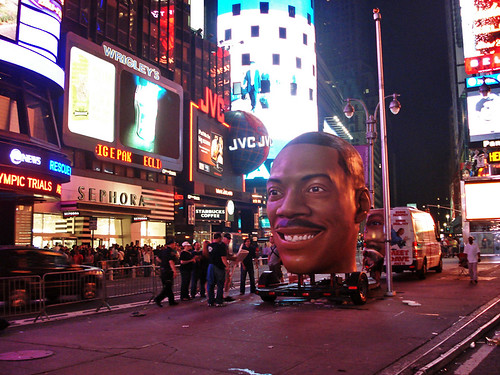
3. **Distinguishing Stunts from Necessary Physical Acting**While firmly opting out of traditional stunt work, Eddie Murphy is meticulous in clarifying that this decision does not equate to a complete avoidance of physical engagement on screen. He understands intrinsically that many roles, particularly within the dynamic action-comedy genre where he has so prominently excelled, necessitate a significant degree of physical performance from the actor to maintain the authenticity and dynamism of a scene. The key, for Murphy, lies in an astute distinction between carefully choreographed physical acting and the execution of high-risk, specialized stunt sequences.
“I’ll do fight scenes and stuff like that,” Murphy affirmed, highlighting his absolute willingness to participate in physically demanding sequences that are meticulously planned and seamlessly integrated into the narrative performance. These are crucial moments where his direct involvement is vital for nuanced character development, maintaining seamless continuity, and allowing him to interact credibly with other actors to advance the plot in a believable and engaging manner. Such scenes are fundamentally about performance and dramatic believability, not about gratuitous or unnecessary risk-taking.
He further elaborated on this critical distinction, noting, “You have to do some physical stuff so you can tie you into the stunt and make it look like you did it, but I don’t be doing it.” This statement illustrates a sophisticated and industry-savvy understanding of cinematic illusion and the collaborative nature of filmmaking. Actors expertly perform the lead-in actions and the crucial follow-through reactions, while professional stunt doubles, with their specialized training and expertise, skillfully handle the genuinely dangerous core action of a sequence.
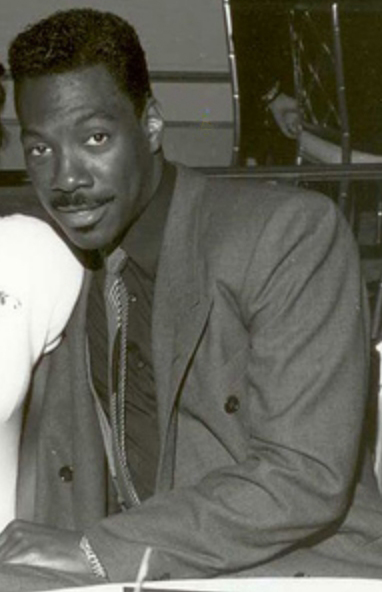
4. **Historical Context: Physical Demands in Beverly Hills Cop Films**Eddie Murphy’s extensive career, particularly his iconic and career-defining role as Axel Foley in the groundbreaking “Beverly Hills Cop” film series, vividly demonstrates that he is certainly no stranger to physically challenging roles. These blockbuster films masterfully blended high-octane action with Murphy’s inimitable comedic timing, consistently placing his character in numerous intense and often perilous situations that demanded significant physical engagement. The dynamic and thrilling action sequences were absolutely integral to the franchise’s enduring appeal, showcasing Foley’s unwavering tenacity, quick thinking, and street smarts amidst electrifying escapades.
The “Beverly Hills Cop” movies were, without question, a quintessential mixture of both exhilarating action and uproarious comedy, frequently requiring Murphy’s character to navigate dangerous scenarios, engage in high-speed chases, and directly confront formidable adversaries. While Murphy himself may not have personally performed the most perilous and technically demanding elements of these sequences, the films unequivocally portrayed Axel Foley as a character who faced plenty of intense physical challenges and was constantly in motion. This robust historical context powerfully illustrates that his current stance is not a refusal to engage with action-oriented narratives entirely, but rather a strategic and refined approach to how he participates within them.
Indeed, the unwavering dedication to realism and spectacle in these films was so profound that professional stunt performers were absolutely indispensable to their resounding success. Stuntman Eddy Donno, for an exemplary instance, actually garnered a prestigious award for ‘Best Vehicular Stunt’ for his exceptional and daring work on the series. This significant recognition unequivocally underscores the vital, specialized role of professional performers in meticulously creating believable, thrilling, and ultimately safe action sequences, even within films fronted by a global comedic superstar.
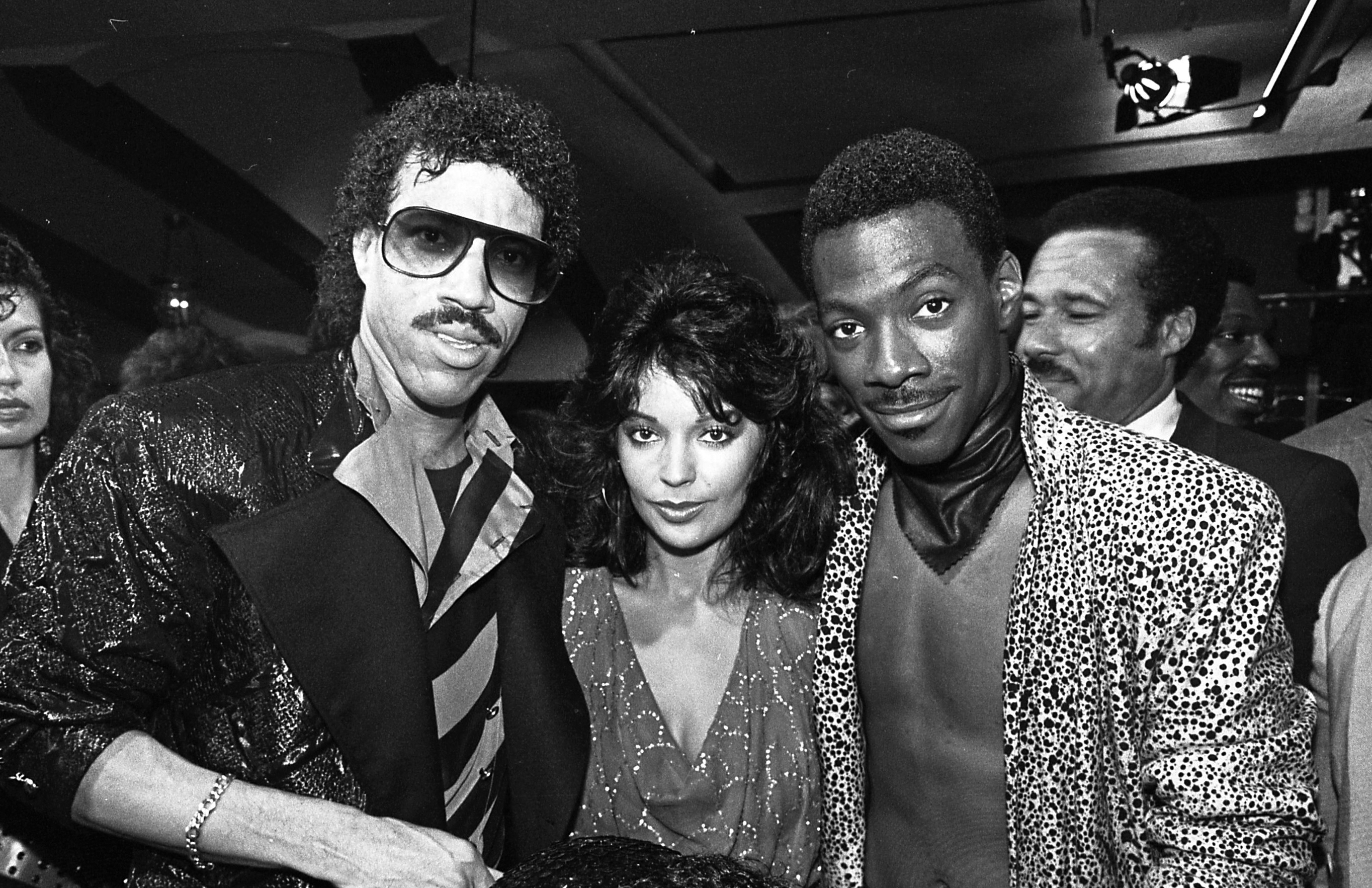
5. **Historical Context: Physical Demands in Coming to America**Beyond the exhilarating, high-octane world of “Beverly Hills Cop,” Eddie Murphy also demonstrated considerable physical commitment in unexpected and memorable ways in other beloved films, most notably in the iconic “Coming to America.” While primarily celebrated as a romantic comedy brimming with heart and humor, the film surprisingly featured a remarkably well-choreographed fight scene that showcased Murphy’s primary character, Prince Akeem, going physically toe-to-toe with his fiercely loyal aide and best friend, Semmi, brilliantly played by Arsenio Hall. This particular sequence, though not categorized as a typical “stunt” in the traditional sense, undeniably required significant physical coordination, precise timing, and undeniable skill from both actors.
“Coming to America” is predominantly and affectionately remembered for its rich characterizations, witty dialogue, and heartwarming narrative rather than its action sequences, making this specific fight scene a rather distinctive, memorable, and often surprising element for audiences. The choreography involved intricate movements, precise blocking, and impeccable timing, allowing both Murphy and Hall to convincingly portray a physical altercation that was both impactful within the story and, in retrospect, surprisingly cool and entertaining to watch. It served a crucial narrative purpose, effectively illustrating the simmering tension, deep loyalty, and complex camaraderie between the two principal characters in a highly engaging physical manner.
This exemplary instance further solidifies the crucial distinction Murphy consistently draws between actively performing choreographed physical scenes as part of his acting role and the specialized, high-risk work of professional stunt execution. He participated fully and enthusiastically in the choreographed demands of the fight scene because it was unequivocally integral to his character’s nuanced portrayal and the film’s overarching narrative arc, inherently requiring considerable acting skill as much as physical execution. This was a carefully controlled and meticulously planned environment, fundamentally different from the unpredictable and inherent risks associated with dangerous feats such as jumping out of multi-story windows or being involved in explosive vehicular stunts.

6. **Comparison to Other Actors and the Role of Stunt Professionals**Eddie Murphy’s notably pragmatic stance on personal stunt work stands in stark and interesting contrast to the highly publicized and often celebrated methods of some of his most prominent Hollywood peers, most notably the indefatigable Tom Cruise. Cruise is widely renowned across the globe for his unwavering, almost obsessive commitment to performing his own increasingly complex, technically demanding, and often extremely dangerous stunts, consistently pushing the established boundaries of what is thought humanly possible for an actor to achieve. This extraordinary dedication, while undeniably impressive and a significant draw for his highly successful films, fundamentally represents a divergent philosophical approach to on-set safety and the very essence of performance.
The long-standing and often passionate debate about whether lead actors should personally perform their own stunts has always been a significant point of contention and discussion within the intricate world of Hollywood, effectively creating two distinct and often opposing schools of thought. While witnessing a global star of Cruise’s caliber “flinging himself out of planes and breaking world records in his 60s” is undeniably a captivating spectacle that consistently generates immense media buzz and public fascination, Murphy’s deeply considered perspective highlights a crucial professional distinction that often gets overlooked. He sagely points out that “stunt performers are highly skilled people who have trained their entire lives for this purpose,” forcefully emphasizing their unparalleled expertise and specialized dedication.
Murphy’s approach unequivocally champions and respects the invaluable role of the professional stunt person, actively advocating for their specialized talent and expertise. He readily acknowledges that their unique skill set is absolutely paramount in executing dangerous and technically intricate sequences both safely and with optimal effectiveness. His candid comments serve as a powerful and timely reminder that there should be “absolutely no shame in letting a professional do the job they are meant to do,” a clear nod to the professionalism and integrity of the stunt community.
Read more about: Gutfeld’s Unfiltered Firestorm: Exposing the Left’s ‘Both Sides’ Fallacy After Charlie Kirk’s Assassination

7. **Prioritizing Safety and Acknowledging His Core Appeal**At the absolute core of Eddie Murphy’s definitive decision to forgo personal stunt work lies a clear, unequivocal prioritization of his own invaluable health and long-term well-being, coupled with an exceptionally acute understanding of his core, enduring appeal to audiences worldwide. He openly and honestly expresses his complete disinterest in “trying to get f**** up on a set,” a candid and highly relatable sentiment that profoundly resonates with the practical realities and inherent demands of a long, illustrious, and often physically taxing career in the entertainment industry. This refreshingly candid admission eloquently underscores a mature and deeply pragmatic perspective, one that sagely recognizes that continued robust health is absolutely essential for his sustained ability to deliver exceptional performances and maintain his legendary status.
Murphy’s assertion that “nobody pays to see him do stunts” is particularly incisive and brilliantly articulated. It cuts directly and powerfully to the very essence of his enduring stardom: he is universally celebrated and adored as a comedian, an unparalleled master of character transformations, and an incredibly charismatic and compelling storyteller. His vast audience connects intimately and deeply with his signature humor, his razor-sharp wit, and his extraordinary ability to effortlessly embody and bring to life a diverse array of captivating personalities that have become cultural touchstones. The visceral thrill of a dangerous, high-risk stunt, while undeniably captivating and impressive in other specific contexts, is simply not the primary or defining draw for his immense fanbase, thereby rendering such risks entirely unnecessary and extraneous for his specific, unique brand of entertainment.
This intelligent and self-aware approach serves as a crucial and timely reminder for the entertainment industry at large: actors, particularly those who have cultivated a distinct and specialized niche like Eddie Murphy, do not inherently need to constantly push physical boundaries or engage in gratuitous danger to create truly memorable and impactful cinematic moments. Their artistry can shine brightest through their established strengths and unique talents. By steadfastly adhering to what he does best—which is, unequivocally, making us laugh with unparalleled comedic brilliance—Murphy not only secures his invaluable longevity within a notoriously demanding industry but also powerfully reaffirms his unwavering dedication to the purest form of the art that has undeniably cemented his status as a living legend.
Having thoroughly explored Eddie Murphy’s calculated stance on stunt work and its deep roots in his career and persona, we now pivot to examine the broader landscape of his remarkable professional resurgence. This period marks a pivotal moment for Murphy, characterized by strategic returns to beloved platforms and the critical success of new projects, all while navigating the evolving expectations of a global audience and refining his artistic commitments.
Read more about: America’s Automotive Stratification: How Vehicle Classifications Reflect Deep Societal Divisions

8. **Eddie Murphy’s Remarkable Career Renaissance**Eddie Murphy is currently experiencing a profound and widely celebrated career renaissance, returning to the Hollywood forefront with significant momentum and critical acclaim after a period of relative quiet. This resurgence finds him “back in a big way and firing on all fronts,” actively engaged in a diverse array of projects that underscore his versatility and enduring appeal across the entertainment spectrum. It’s a testament to his unique talent that he can reignite such widespread excitement and critical re-evaluation simultaneously.
This triumphant return encompasses not only a highly anticipated hosting gig on “Saturday Night Live” but also the development of sequels to his iconic films, “Coming to America” and “Beverly Hills Cop.” Crucially, it’s also anchored by the resounding critical success of his Netflix film, “Dolemite Is My Name,” which has garnered some of the strongest reviews of his career. This multi-faceted comeback represents a meticulously planned and expertly executed re-engagement with an industry that deeply values his contributions.
His strategic re-entry into major projects, coupled with the renewed critical appreciation for his craft, highlights a mature artist meticulously shaping his legacy. Murphy’s actions demonstrate a clear intent to leave an indelible mark, ensuring that his later career is defined by intentional choices and a profound commitment to quality entertainment, rather than merely revisiting past glories without substance.
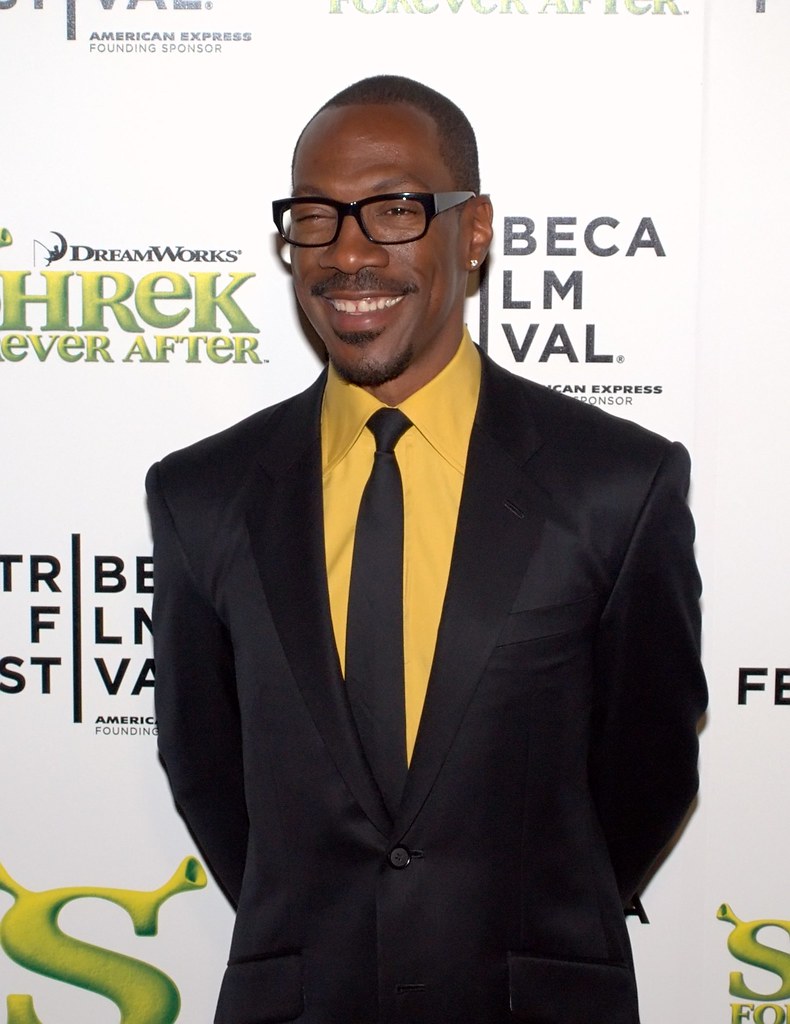
9. **The Triumphant Return to Saturday Night Live**A truly significant marker of Eddie Murphy’s revitalized career was his much-anticipated return to host “Saturday Night Live” on December 21, 2019, a momentous occasion after a staggering 35-year absence from the show’s iconic stage. His initial run on SNL in the 1980s, beginning at the tender age of 19, launched him into superstardom, making his long-awaited homecoming an event laden with nostalgia and immense public interest for both loyal fans and the industry at large.
Murphy candidly shared with Ellen DeGeneres the catalyst behind his decision to finally return to the sketch comedy institution. He explained that witnessing the “40th-anniversary thing a few years back,” and reuniting with “all the other actors and actresses and the people in the crew,” ignited a “big burst of nostalgia” within him. This powerful sentiment fueled a desire to return, but he was patient, waiting for what he considered the “right time” to make his grand reappearance.
His return was heralded as a cultural event, complete with musical guest Lizzo, and fans eagerly anticipated the potential revival of his most beloved characters. Murphy himself joked about revisiting iconic figures like Mr. Robinson, Gumby, and Buckwheat, even acknowledging with a wink that “Young people are going, ‘Who are these characters?'” This moment not only served as a powerful link to his storied past but also firmly cemented his continued relevance in contemporary pop culture.
Read more about: The Director’s Chair: Unpacking the High-Stakes World of Hollywood Firings and How Creative Differences Reshaped Cinematic History

10. **The Creative Drive Behind ‘Dolemite Is My Name’**The timing for Murphy’s triumphant SNL return was deemed “perfect” largely due to the critical and popular success of his Netflix movie, “Dolemite Is My Name.” Murphy himself proclaimed, “Dolemite made it the perfect time ’cause we got a funny movie,” underscoring the vital importance of artistic quality and audience reception in shaping his career choices. This film was not just another project; it was a deeply personal and professionally significant endeavor.
After his previous film, “Mr. Church,” did not achieve the desired critical or commercial success, “Dolemite Is My Name” became a crucial project for Murphy. He articulated his motivation clearly: “It’s great to be in a movie that works and that’s funny. That’s the only reason why I’m making movies.” This statement highlights a mature artist’s commitment to delivering genuinely entertaining and impactful cinema, especially after a period of self-reflection.
The overwhelmingly positive reception for “Dolemite Is My Name” brought Murphy a profound sense of satisfaction. He enthusiastically noted, “This is a well-made movie and it’s f*cking funny—and that’s a good feeling.” He even suggested that this film was so satisfying it could have served as “a nice way to go out” if he had chosen to retire from acting and solely focus on stand-up, an indication of the film’s profound personal and professional significance to him.
Read more about: 22 Top Netflix Original Movies for Your Next Movie Night

11. **The Anticipated Sequel: ‘Coming to America 2’**Among the flurry of his comeback projects, the sequel to one of his most beloved films, “Coming to America 2,” stood out as a highly anticipated venture for both Murphy and his vast fanbase. Speaking about the production, Murphy expressed immense satisfaction with the outcome, stating unequivocally, “I couldn’t be happier with how it turned out.” He further elaborated, believing they had “gone above and beyond what anybody would think,” which speaks volumes about the creative ambition and dedication invested in this long-awaited follow-up.
The original “Coming to America” struck a particularly unique chord with audiences, transcending a mere comedy to become a cherished cultural touchstone. Murphy recognized this profound connection, noting, “That movie more than any picture that I have done… I don’t know what it is in the culture.” This deep resonance translated into extraordinarily high expectations for the sequel, with fans issuing a clear, emphatic plea: “don’t f*ck that movie up.”
In the sequel, Murphy delighted audiences by reprising “all the old characters from the first one,” even attempting to count them on air, estimating “maybe it’s five or six now.” This commitment to bringing back the beloved ensemble of personalities, a hallmark of his transformative acting, demonstrates his dedication to satisfying the fervent desires of a loyal fanbase, ensuring continuity and nostalgia were at the forefront of the creative process.
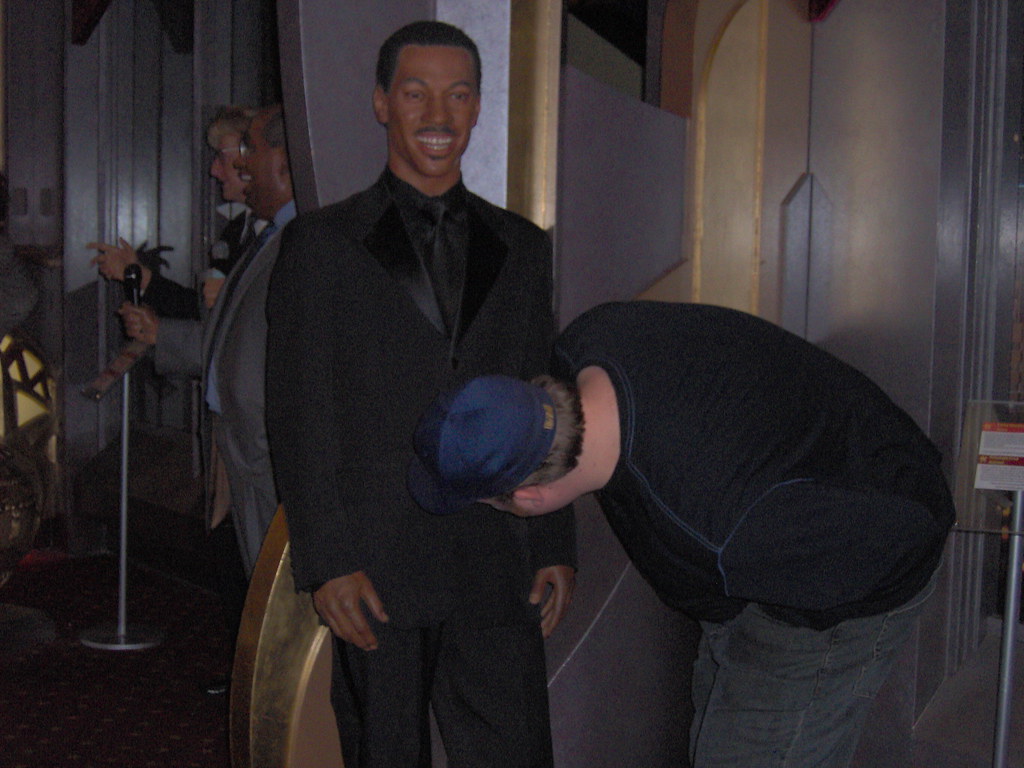
12. **The Evolving Perspective on Extensive Character Makeup**While Eddie Murphy has established clear boundaries regarding physical stunt work, another fascinating facet of his evolving career perspective concerns the extensive character makeup often required for his multi-role performances. In many of his films, including the original “Coming to America” and its sequel, he has famously portrayed multiple distinct characters, necessitating hours in the makeup chair. Murphy humorously but pointedly acknowledged a recurring sentiment: “every time I do a makeup movie I always say, ‘This is the last time I’m doing this sh*t.’”
Despite this often-expressed weariness, Murphy admits to a recurring pattern: “And then I always wind up back in the makeup chair.” He explained that it’s not a matter of forgetting the arduous process, but rather finding projects where “it kinda makes sense” for the artistic integrity and comedic value of the film. This pragmatic acceptance highlights his enduring commitment to character portrayal, even when it involves significant personal discomfort and time.
His most recent declaration, made in a lighthearted, almost jocular tone, was “So I’m never doing it again, now.” This playful remark, made during his interview with Ellen DeGeneres, was met with a retort from the host, “We’ll show you this tape,” hinting at the likelihood of Murphy once again succumbing to the allure of a transformative, makeup-heavy role. It suggests that while the physical demands are clear, the creative pull of such roles remains strong for this master of disguise, though perhaps with a more refined selection moving forward.
Read more about: Ashley Graham: How the Queen of Curves Continues to Redefine Beauty and Empower Millions at 37
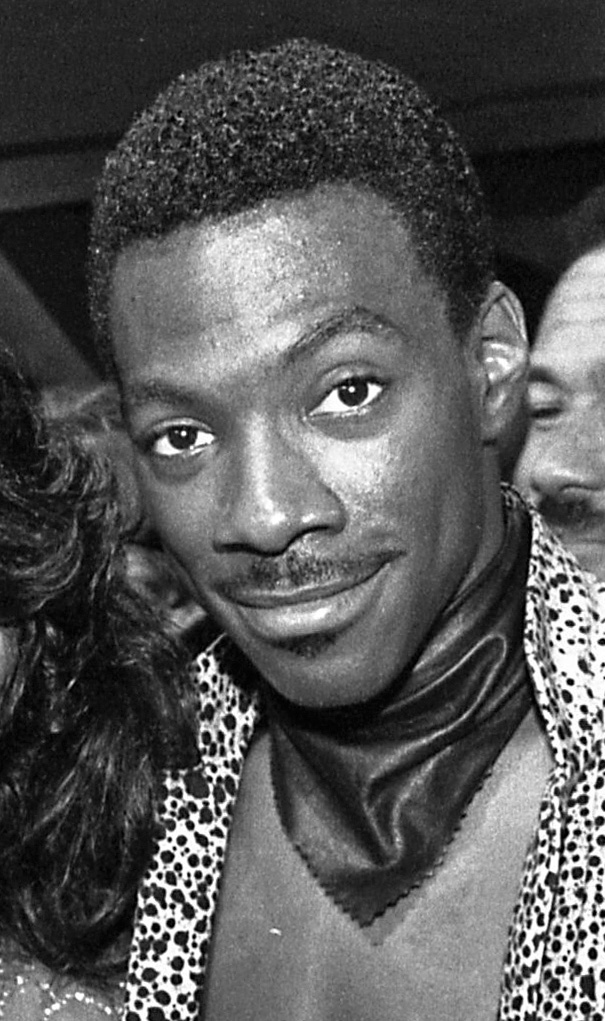
13. **Murphy’s Refined Criteria for Cinematic Engagement**As Eddie Murphy navigates this vibrant phase of his career, his decisions regarding stunts, makeup, and project selection coalesce into a refined set of criteria for his cinematic engagement. This mature approach is a testament to an artist who, having achieved nearly every possible accolade, now prioritizes artistic integrity, personal well-being, and a deep understanding of his unique connection with his audience. His current philosophy is one of strategic excellence, rather than simply chasing box office numbers.
At the heart of this refined criteria is a clear dedication to making “funny movies that work.” His desire to be in films “that people like” is paramount, explicitly stemming from his core identity as a comedian and a master storyteller. This unwavering focus on his strengths—humor, character portrayal, and engaging narratives—ensures that his projects resonate authentically with his fanbase, who, as he astutely observes, “are coming to see me to laugh,” not to witness gratuitous risk-taking.
This discerning approach to his craft has not only secured his longevity within the notoriously demanding entertainment industry but has also reaffirmed his status as a quintessential Hollywood A-lister. By steadfastly adhering to his artistic principles and wisely choosing his battles, Eddie Murphy continues to craft memorable cinematic moments that entertain, inspire, and, most importantly, make the world laugh, cementing his legacy as a true legend of the silver screen.
Eddie Murphy’s journey through Hollywood is a masterclass in adapting, evolving, and ultimately, thriving. From his early days on SNL to his current renaissance, he consistently demonstrates an uncanny ability to understand himself, his audience, and the industry he inhabits. His pragmatic decisions, whether to forgo stunts, carefully select his roles, or even playfully grumble about makeup, all point to a singular truth: a comedic genius at the peak of his powers, crafting a legacy built on laughter, longevity, and an unwavering commitment to what he does best. He remains, without question, an enduring icon, making his own rules and proving that sometimes, the smartest move is knowing exactly what you won’t do, allowing your true brilliance to shine through unimpeded.”
, “_words_section2”: “1945



